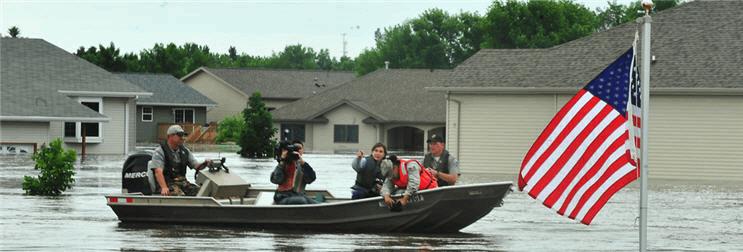American Water: Defining Our Challenges, Devising Solutions

By Kevin Westerling,
@KevinOnWater

As the lead troubleshooter and innovator for water systems serving communities across the U.S., American Water’s Dr. Benjamin Stanford is in position to effect more change than most in the water industry. What issues draw his attention, and how might they be fixed? This edition of our “Water Champions” series looks at the biggest of water challenges.
Following in the footsteps of a legend is difficult, but it certainly helps when you have worked alongside and learned from that person, in addition to having every qualification necessary for taking over. The role I refer to is that of Chief Environmental Officer at American Water, the nation’s largest publicly-traded water and wastewater utility company. As Dr. Mark LeChevallier rides off into the sunset at the end of 2017 after a 30-year career at American Water, Dr. Ben Stanford will take the reins. LeChevallier is well-known in the industry as a pioneer of microbiology advancements and innovation within water/wastewater, having received the prestigious Abel Wolman Award of Excellence from AWWA and recently named to the National Academies of Sciences, Engineering, and Medicine’s water science and technology board. Stanford is himself a worthy “Water Champion,” currently the Senior Director of Water Research and Development at American Water (since May 2017) and previously the Director of Applied Research at the consulting firm Hazen and Sawyer.
Stanford earned his PhD at UNC-Chapel Hill and completed his post-doctoral work at Southern Nevada Water Authority in Las Vegas. Together, those experiences allowed him to delve into numerous issues around emerging water quality threats, advanced treatment systems, membranes for water reuse, process optimization, chemistry, and toxicology. At Hazen and Sawyer, he tackled some of the major issues in the water industry, including climate change and extreme weather events, water supply sustainability, contaminant monitoring and treatment, water recycling for irrigation and for drinking water, safety and risk management, and chemical handling and storage. At American Water, Stanford is able to leverage that multi-disciplinary experience to develop solutions for a variety of issues and challenges across the company’s near-nationwide footprint — water, wastewater, and other related services in 47 states (and Ontario, Canada) — at large and small systems alike.
Considering American Water’s far-reaching coverage and wealth of resources, I sought Dr. Stanford’s perspective on problems common to U.S. utilities, as well as input on how to solve them.
What are the most urgent issues facing the drinking water industry today, and to what extent are they being addressed and (hopefully) rectified?
 When I look at the most urgent issues affecting the water industry, there are four key areas that I like to focus on.
When I look at the most urgent issues affecting the water industry, there are four key areas that I like to focus on.
The first issue is water supply. There’s a finite amount of fresh water: You get water from underground. You get water from the surface sources such as rivers and lakes. You desalinate and produce fresh water from brackish or salt water. And, you can reclaim and recycle the water in your community.
The second is water infrastructure, and the aging nature of water infrastructure and wastewater infrastructure.
The third element, water quality, has been brought to light with the lead-tainted water in Flint, MI, and the algae blooms in Lake Erie and the Ohio River.
And the fourth is customer connectedness. Utilities in the future will have to connect with customers more along the lines of how they have become accustomed to connecting with Amazon and other service providers.
At American Water, we feel an obligation to make sure that we find solutions to these challenges. Our scientists and engineers are working with the water research foundation, other funding agencies, and companies across the world to find solutions to these challenges.
What are the major issues and potential solutions with regard to wastewater and stormwater?
Many of the issues affecting drinking water also affect wastewater, but I think the need for continued investment in wastewater infrastructure is one of the most critical. Earlier this year, the American Society of Civil Engineers gave a grade of D+ to our country’s wastewater infrastructure.
With the ongoing need to upgrade infrastructure, there is also a need for increased funding. Funding both capital projects and O&M can be challenging because the public often does not see or appreciate the modern convenience of wastewater treatment, making it difficult to convey the need for increased funding. American Water is actively involved in helping to maintain our water infrastructure, and we invest approximately $1.3 billion annually into our systems to ensure continued reliability.

There are about 700,000 miles of wastewater pipes around the country. In approximately 770 communities in the U.S., wastewater and stormwater drain into the same treatment system. These combined sewer systems can experience capacity issues following heavy rain events, resulting in overflows containing stormwater as well as untreated human and industrial waste, toxic substances, debris, and other pollutants. These combined sewer overflow occurrences can significantly impair water quality and impact public health and wildlife.
The issue of aging infrastructure is a critical one, because it’s also tied in with supply. We can’t afford to be losing treated water. We can’t afford to have the environmental impacts of untreated wastewater being improperly disposed.
What lessons can be learned from recent catastrophic weather events, specifically around water/wastewater infrastructure?
Over the past few months, American Water has experienced several natural disasters in its service areas. With each of these events, safety came first. We prepared, leveraged resources, and looked to help impacted communities in Texas, Louisiana, Florida, and California.
One of the most important lessons we have learned is that during a significant weather event, a water utility’s level of preparedness can mean the difference between temporary inconveniences and serious health and environmental consequences.
Fortunately, water and wastewater systems are built for resiliency and sustainability of operations during weather events or other circumstances that could potentially interrupt service. Customers generally do not lose service during storm events because systems are designed to provide continuous service under a wide range of events.
At American Water, we continually review our processes and procedures, assess potential vulnerabilities and upgrade our infrastructure to make sure we keep our customers lives flowing. One recent example is the $65 million investment being made by New Jersey American Water at its Raritan-Millstone Water Treatment Plant. This investment includes raising existing floodwalls, adding and relocating floodgates, and increasing the height of existing levees that surround the plant.
Service reliability has been and will always be a key parameter in the planning and design of all American Water drinking water and wastewater systems. The bottom line is, the better prepared you are, the better the outcome.
Many communities in need of infrastructure upgrades — whether at risk due to failing and/or lead-laden pipes, climate-change impacts, or emerging contaminants — are without proper funding for improvements. What steps can be taken to invest in and protect these communities?
America’s drinking water and wastewater sector is highly fragmented, with over 50,000 community drinking water systems and nearly 15,000 community wastewater systems nationwide. The overwhelming majority are small systems, serving under 10,000 people. Their small scale and fragmentation results in a number of challenges, including difficulty in accessing capital, operational and procurement inefficiencies, and challenges in meeting U.S. EPA water quality standards.
The federal government could incentivize communities to seek partnerships with larger regional operators (private or public) as an economically-preferred option for offering community water and sewer service. Without imposing a “mandate” or increasing the regulatory burden, federal policy incentives could eliminate inefficiencies in the water sector through partnerships and regionalization.
For a community to maintain and enhance the condition of its infrastructure long-term, water utilities should be expected, at a minimum, to manage their assets based on a process where adequate repair, rehabilitation, and replacement are fully reflected in management decisions, including water rates.
What new or trending technologies are you most excited about? How might they impact water/wastewater operations?
There is a tremendous explosion in advanced analytics to streamline the way we learn about and improve upon the operation of water and wastewater plants. I believe that technology, specifically digital technology, will fundamentally change the way we operate water and wastewater utilities. The computing power, data processing, and visualization of information is headed in a direction that we as a combined water community can leverage to improve the customer experience and ensure sustainable delivery of safe, clean, reliable, and affordable water.
